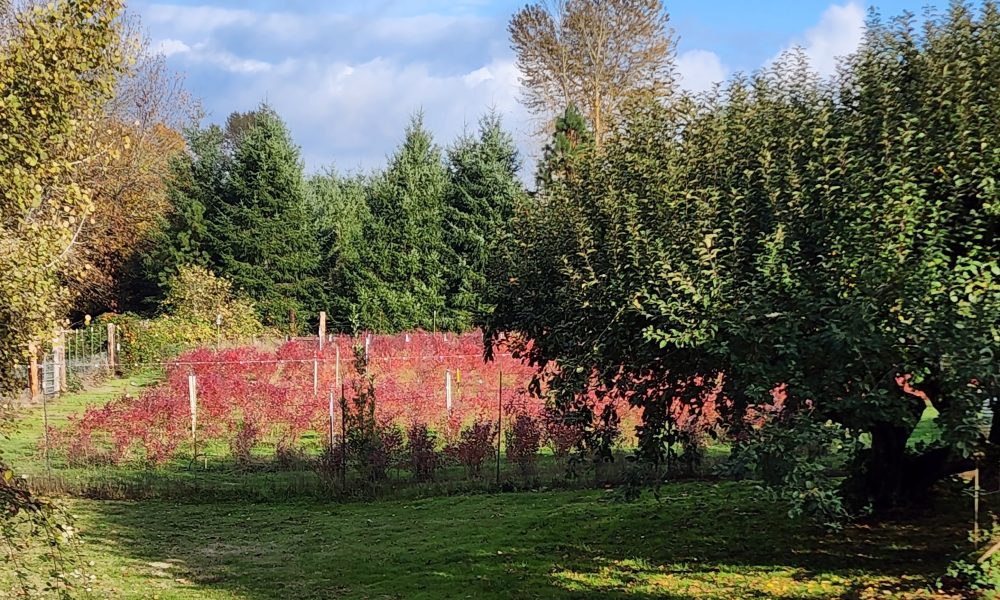A trip down ‘Memory Lane’
SPRINGFIELD — With 1,100 blueberry plants and two staff members, Memory Lane Berrie’s winter season is perhaps more labor-intensive than the summer season of production.
“People think it’s the offseason and it’s not, there’s a lot of work to do,” said Dani Miller, co-owner of Memory Lane Berries.
The Chronicle interviewed Dani and Bill Miller on July 15 for a feature on blueberry farming and Dani Miller on Nov. 22 to receive an update on their season’s crop.
“Right now it’s just weeding. The weeding really never ends,” said Miller.
It didn’t take long for the dead of winter to hit, which also means it’s pruning time.
There are 350 blueberry growers in Oregon, with farms averaging 10 acres. At just one acre, co-owner Bill Miller calls Memory Lane “a postage stamp farm.”
The pruning process consists of removing any part of the blueberry bush that is dead or diseased and the lower branches of the plant, which directs energy into the more mature branches that will produce the most berries.
It takes about 15 minutes to prune a single blueberry plan, and with 1,100 plants, comes to 275 hours of pruning.
“Bigger farms have a crew, but we just have us,” said Dani.
Dani and Bob Miller both have day jobs, so most of the pruning happens on the weekends in the winter months from Christmastime through February.
This year, in an effort to spend less time weeding, the Millers are putting in weed mat and a drip irrigation system. The ground cover will help hold the weeds down, and the drip irrigation will only water the area around the plants, rather than watering the entire plot and all the weeds.
Up until 2019, Oregon blueberry production steadily increased to 153.1 million pounds produced, but then dropped to 149.8 million in 2020 and 144.9 million in 2021.
This could be due to the winter growing colder and summer growing warmer in recent years.
Most of us can’t forget the unbearable heat wave that passed over the Willamette Valley in June of 2020 from which Memory Lane is still recovering.
Not only was there a heat wave, but a harsh winter immediately prior. Transitioning from the frigid cold and then abruptly into a hot summer left a short spring, and therefore, less time for plants to acclimate and for pollinators to produce berries.
As a result, continuing Oregon’s trends, production at Memory Lane was down by about 40%.
Next year, they hope to have a better season, featuring garlic and corn.
This year, the Miller’s planted 600 bushels of garlic. With this garlic, they plan to donate it to Food for Lane County. They are also moving their pumpkin patch so it will be visible from the road in the fall and making space for corn, too.
By next winter, Memory Lane is also hoping to have a more developed kitchen and be able to sell baked goods, as well as their plentiful harvests of berries and vegetables.








